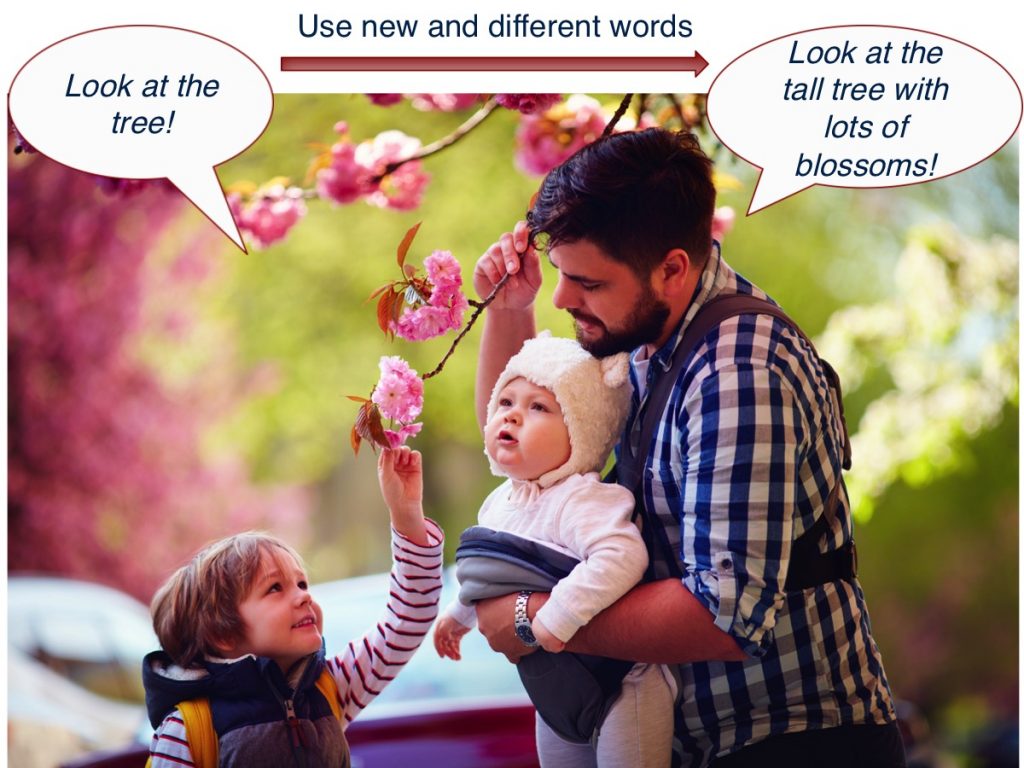
What are some factors that determine the rate of vocabulary growth in young children? Some of the differences in children’s vocabulary size come from their personalities. For example, some children start talking without much understanding of what they are saying. Other children may be more cautious. Some children are also more social than others, and thus may be more driven to talk.
A child’s language experience also plays an important role. Both the quality and quantity of the language that children hear relates to their language growth over time.
An important aspect of quality language is using Infant Directed Speech, which we talked about earlier in this module. But that’s not the only component of quality language. Using new and different words to label and describe new things is important. Instead of saying, “Look at the tree!” you might say, “Look at the tall tree with lots of blossoms!” Additionally, children learn best when they participate in the language exchanges. Children are active learners.
-
- Back-and-forth or contingent interactions
- exchanges where a caregiver times her responses to a child’s behavior
- Canonical babbling
- producing the same consonant and vowel over and over, such as dadada
- Infant-directed speech
- a special tone and style of speech used to talk to young children. It’s also called parentese
- Joint attention
- shared attention between social partners to an object or event
- Overextension
- using a word to describe more object categories than it actually represents
- Underextension
- failing to extend a word to other objects in the same category
- Vocabulary spurt
- rapid growth in word learning